AMOSKEAG
"THE LEGEND"
OUR CLUB'S NAMESAKE
The Great Boston Fire of 1872
The Great Boston Fire was sparked in a basement on Summer St. A little past midnight a telegram was received in Portsmouth, “Fire in Boston beyond control. Come immediately to our aid.” Hatch, Supt. Eastern Railroad, Boston.” A reply was sent, “Coming with steam fire engine and forty veteran firemen. Portsmouth, NH.” Kearsarge Engine 3 and Portsmouth firemen were off to aid the dauntless fire-fighters of Boston who were desperately struggling to save their city from utter destruction. The Kearsarge was speedily entrained and two hours later, skidded off the freight car at the Eastern railroad station on Causeway street, and started a quick time pace through the fire-lighted streets of the North End for the scene of strenuous action that awaited them. (Marvin, T.E.O., 1916)
Kearsarge made history early on the morning of Nov. 10, 1872.
Rushed to Massachusetts by train, the New Hampshire-built fire pumper helped save the iconic Old South Meeting House amid a blaze that flattened 65 Boston acres like a bomb.
History Matters: Kearsarge pumper fought Great Boston Fire of 1872
Portsmouth fire crew helped save historic Old South Meeting House
A legend grows
Ninety-six fire companies from 21 cities responded to Chief Damrell’s call. Portsmouth Mayor Thomas E.O. Marvin and 40 firemen accompanied the city’s fire engine to Boston by rail. Known officially as Kearsarge Steam Engine 3, the 6,000-pound coal-fired engine was the third machine Portsmouth had purchased from the Amoskeag Manufacturing Co. of Manchester. Today, it is one of only a few dozen surviving Amoskeag machines.
It was named in 1870 for the USS Kearsarge, a steam-and-sail powered ship that had gained fame in battle during the recent Civil War. The sloop of war, in turn, had been named for a New Hampshire mountain. The engine was originally housed at the small fire station at the head of Court Street in Portsmouth, a building now being adapted into luxury condos. A Portsmouth cotton mill, a downtown hotel, a street, a military band, and a war memorial have also carried the Kearsarge name. Four more ships named USS Kearsarge have since served in the U.S. Navy.
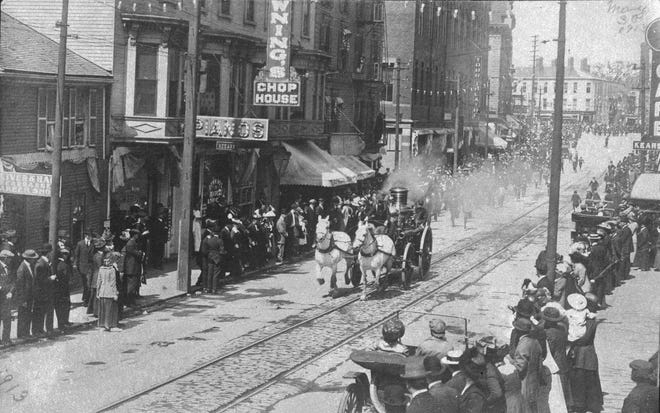

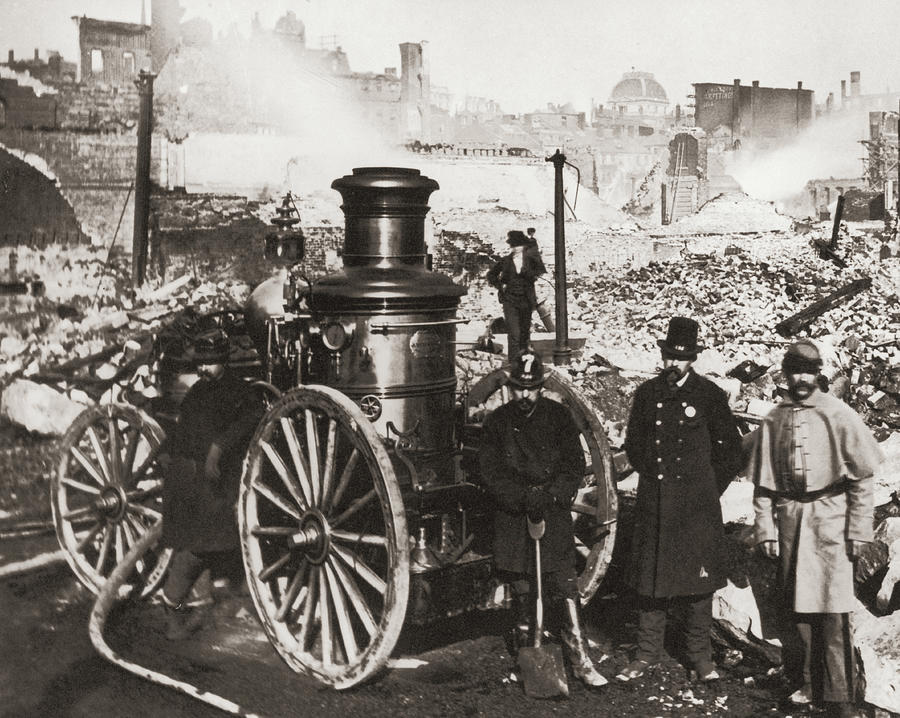
THE STEAM FIRE ENGINE
“Behold! How she shines in her beauty,
Resplendent in silver and gold;
Ne’er shrinking from doing her duty,
When worked by her members so bold;
So peacefully-innocent standing,
You’d dream not the work she can do;
But when we her aid are demanding,
She always proves faithful and true.
“We look on her with admiration,
Well knowing the work she can do;
She’s full of life and animation;
Her duty she seems to know, too;—
She saves us a deal of hard labor,
Her muscles seem never to tire—
Admired by stranger and neighbor,
Whene’er she’s at work at a fire.
“Oh! dear shall she be to us ever;—
For she’s our companion and friend;
She does her work neatly and clever,
And labors, with zeal, to the end;
The Steamer! We’ll ever adore you;
In praising you we never tire;
Hand-engines were nothing before you,
Nor compared with you when at a fire.”
(FirematCa Herald, March 9, 1882.)
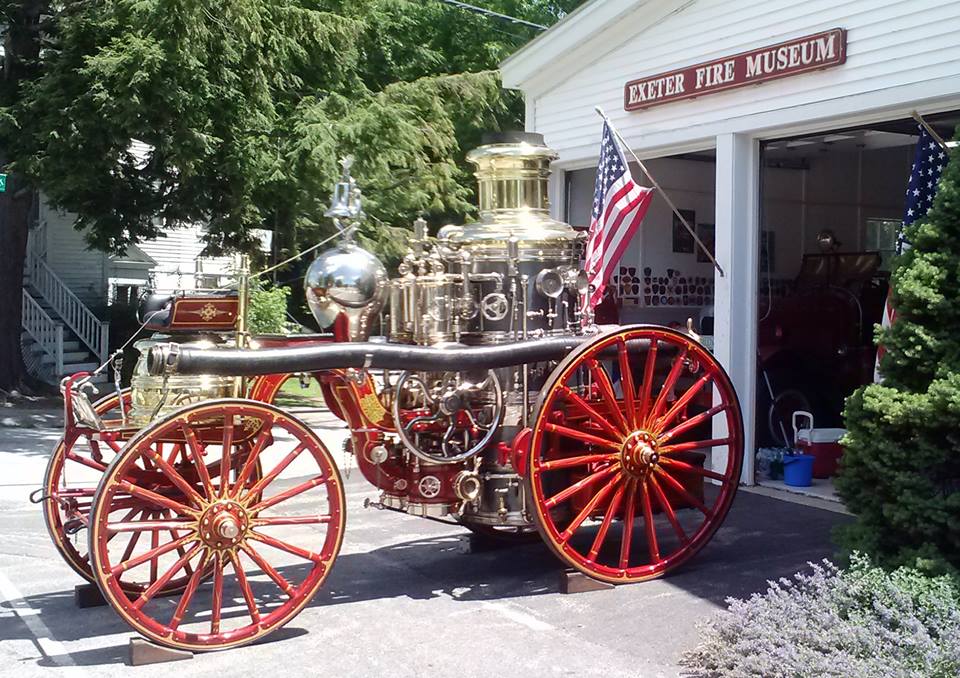
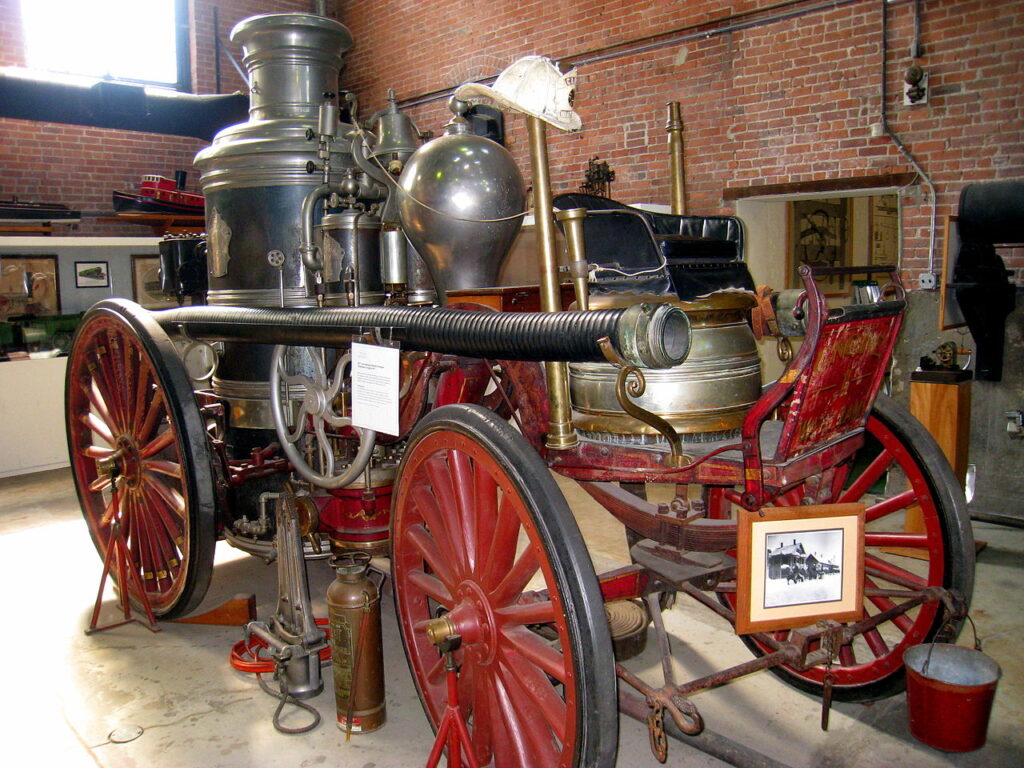
OUR CLUBS NAMESAKE
In early 1984 we were known as “The NH Chapter of SPAAMFAA”. Sometime later, it is not known exactly when, the name of our club was changed to the “Amoskeag Reserve Engine Company.” The name coming from one of the most famous, if not the most famous Steam Fire Engine, The Amoskeag Steam Fire Engine.
William T. King wrote in his book The History of the American Steam Fire Engine, published in 1896;
“AMOSKEAG — 1859. The Amoskeag Steam Fire Engines were built by the Amoskeag Manufacturing Company of Manchester, N. H. They need no praise from my pen, as their far famed reputation is only too well known, not only from ocean to ocean on this continent, but in the far distant lands of Asia.”
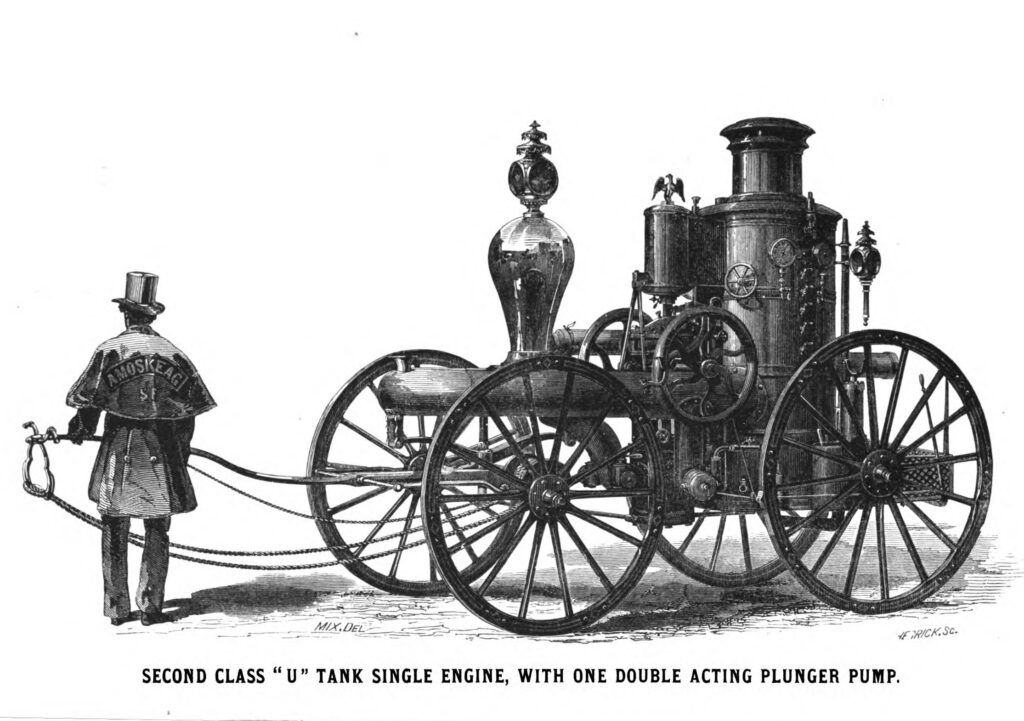
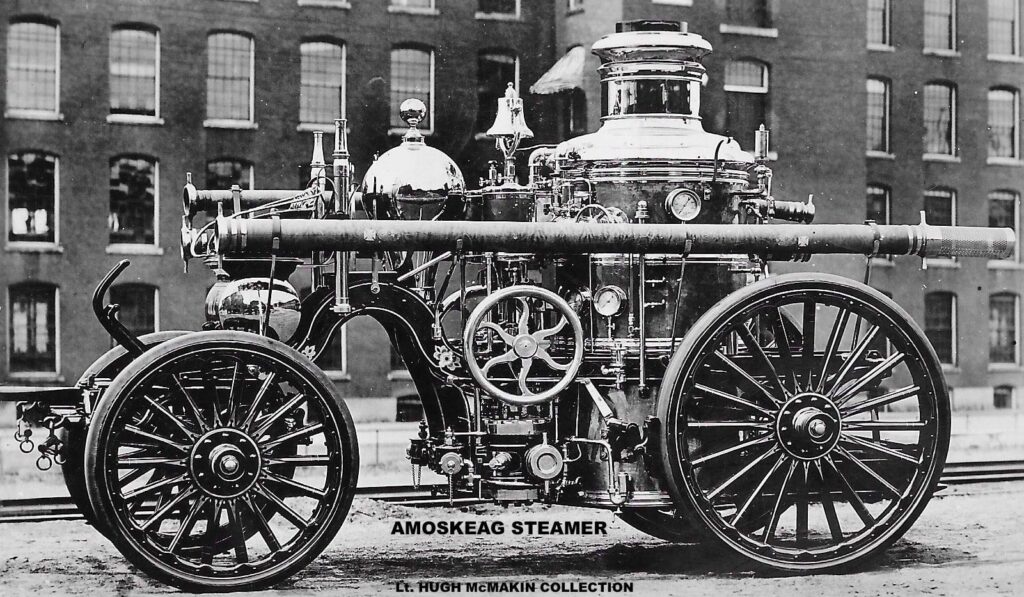



amoskeag steam powered fire engine
The Amoskeag Locomotive Works, in Manchester, New Hampshire, built steam locomotives at the dawn of the railroad era in the United States. The locomotive works operated as a division of the Amoskeag Manufacturing Company between 1848 and 1859.
Besides building locomotives for railroad use, Amoskeag also built steam fire engines until 1876. A steam-driven self-propelled appliance was made by Amoskeag was used to fight the Great Boston Fire of 1872. Amoskeag fire engines served as the initial fleet for the New York City Fire Department and the first Los Angeles Fire Department fire company. The Firefighters Museum in Yarmouth, Nova Scotia, has an 1863 Amoskeag fire engine.
Amoskeag Manufacturing Co. of Manchester, N.H. manufactured a variety of fire engines, pumpers and support vehicles, including a 9,240pound steam pumper, named “T.J. Coolidge”, after the chairman of the board of directors of the Amoskeag Manufacturing Co. (Coolidge was a great grandson of Thomas Jefferson).
Their first steam fire-engine was built in 1859. It was designed by N.S. Bean and was named Amoskeag #1. This engine was in service for seventeen years. The firm constructed eleven more of this style engine. In 1861, they produced another style, available in three sizes, named the “Harp”, because of its shape.
In 1866, they built their first double straight frame, in 1870, they added a crane-neck style, and in 1877, they offered what is known as the Single Short Frame. By now, over 700 vehicles had been sold, and in the spring of 1877, the firm changed management, and their company name to Manchester Locomotive Works; Manchester, NH, circa 1859-1900.